March of the Living diary – Part I: A journey through our history
Jewish News’ Andrew Sherwood has joined the UK Delegation in Poland and will be documenting his trip
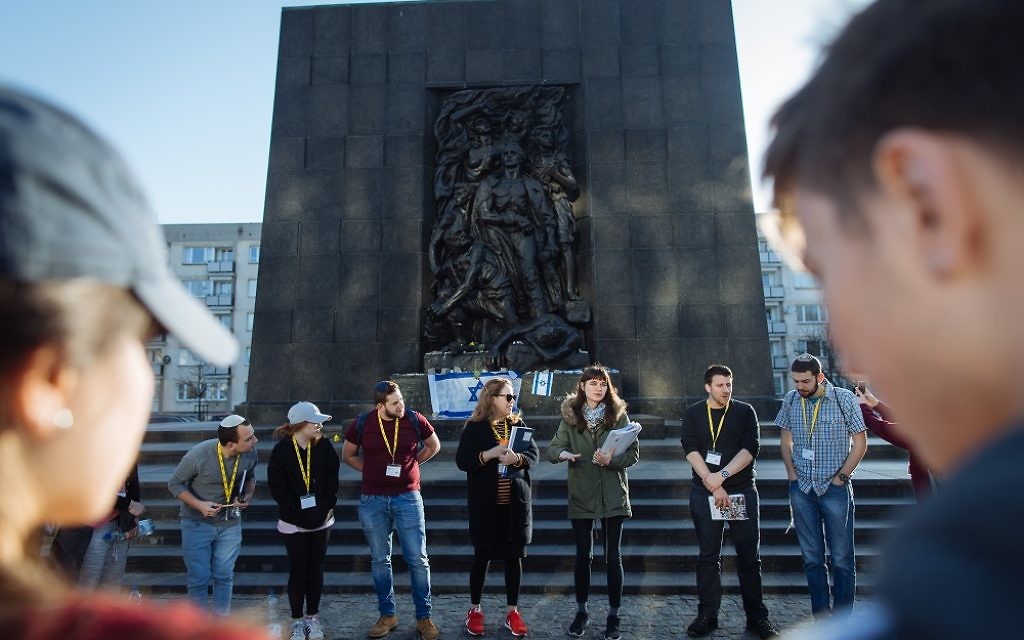
Jewish News’ Andrew Sherwood is among 300 Brits who have travelled to Poland for this year’s March of the Living trip.
The five-day journey culminates in a 1.5 mile march from Auschwitz I to Birkenau – which will see nearly 12,000 people participating from all around the world – to mark Yom Hashoah, International Holocaust Memorial Day.
Ahead of the march on Thursday – read Andrew’s reflections, as he learns about the history of Poland’s Jews, and prepares himself to visit the Nazis’ most notorious death camp.
Get The Jewish News Daily Edition by email and never miss our top stories Free Sign Up
Day One:
While I didn’t appreciate it at the time, we were going to be given a chronological history of Jews in Poland during our six-day stay. I had prepared myself for an intense account of the sheer horrors of the Holocaust, and while that was going to unfold during the trip, day one was more or less setting the scene pre-1930, how Jews prospered – and enjoyed a good life – in Poland, one which would be in stark contrast once the country was invaded by the Nazis.
Our first stop was the Warsaw Cemetery, one of the biggest Jewish cemeteries in Europe, housing around 250,000 stones. This though was the aforementioned celebration, focusing on the lives of so many Jewish people, men and women, who flourished in the country. Opened in 1806, it features the graves of philanthropists, historians, doctors and publishers, it helped portray life for the Jew in Poland, and the picture it painted was of a prosperous one.
Of course that wasn’t to last forever, and learning how it was partly demolished during World War Two, with German forces using it for mass executions, burying the victims of the Warsaw Ghetto, Warsaw Ghetto Uprisings and other mass murders, we left the cemetery with a startling reminder of why we were here – two mass graves sitting, cordoned off, either side of our pathway out. Even more shocking for me, was how on the other side of the street, modernised apartments had been built overlooking a green area which hosted of upwards 9,000 dead bodies.
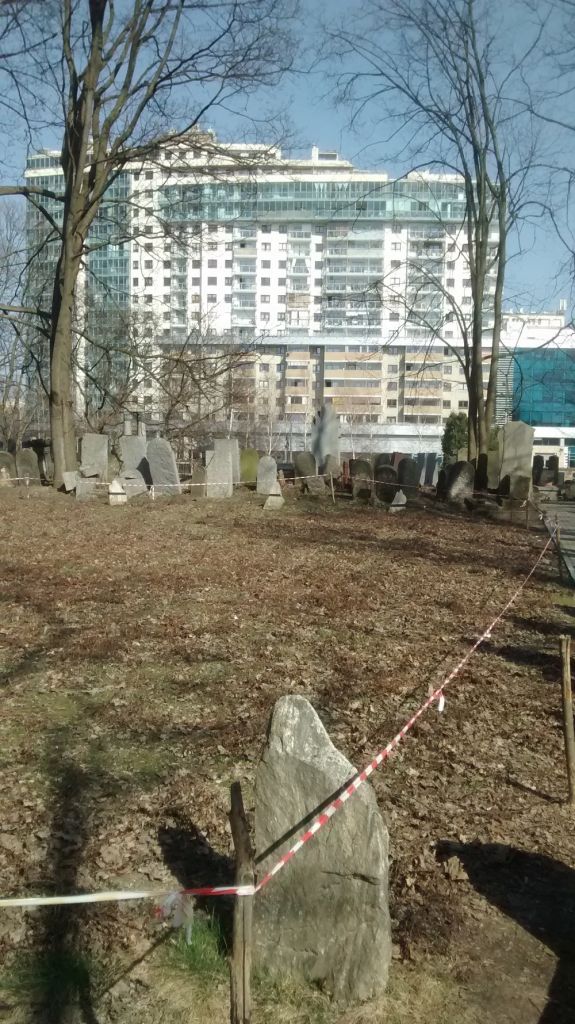
The theme of the past being integrated into the present was further illustrated when we paid our first to the Warsaw Ghetto. Walking through a housing development, it was only when I was leaning on a wire (which was actually the fence of someone’s back garden), that I then realised I was standing in the Ghetto itself. A pattern was emerging from me, and one which our excellent educator Richard Verber, assured me would be answered in due course.
The day continued with a visit to the Polin Museum – “1,000 years of Jewish Life in Poland” and as the Cemetery had alluded to, illustrated a rich tapestry of life Polish Jews had enjoyed. Dinner was preceded by British Ambassador to Poland, Jonathan Knott, speaking to a group from the UK Delegation.
Day Two:
With only one full day in the Polish capital, the day started with a more comprehensive look at the Warsaw Ghetto. Again – and not to put too fine a point on it – as we stood listening to accounts of what it was like to be there, the inhumane conditions people suffered, from the corner of my eye, I could see people leaving for work, kids going to school. The close proximity of their living surroundings, literally living on the doorstep of The Ghetto was something I – and others in my group having discussed it with them – found incredibly hard to comprehend.
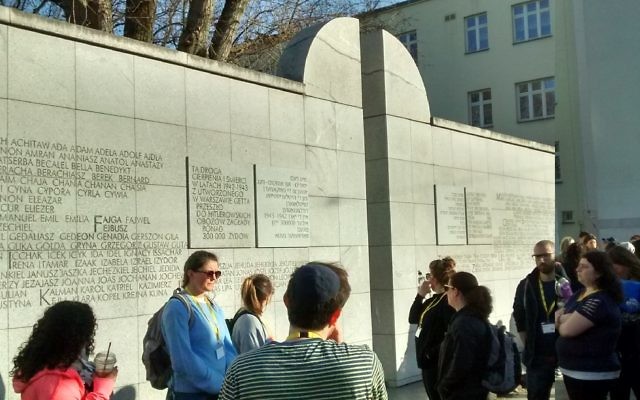
From there we went on a Heroes Walk, commemorating those who led the uprising such at the Ghetto and culminating in the Ghetto Heroes Monument – located where the first armed clash of the uprising took place.
Leaving Warsaw, we embarked on a near three-hour coach ride to Lublin, particularly poignant as it was the birthplace of Holocaust Survivor Alec Ward, who I found out later in the evening had passed away. Arriving in what is the ninth largest city in Poland, we did our bit for maintaining tradition by studying a section of the Talmud at the Yeshivas Chachmei, before getting back on the coach to visit our first Concentration Camp of the trip at Majdanek.
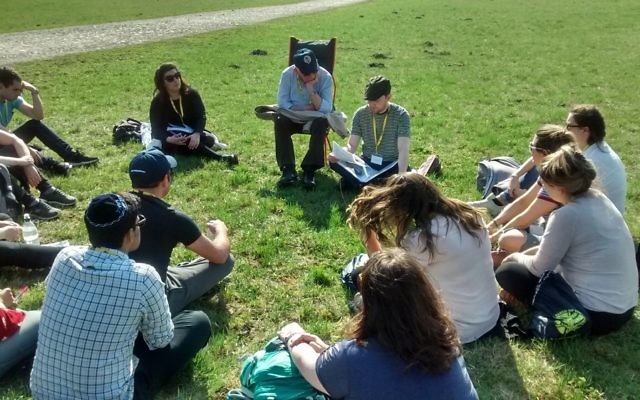
The UK Delegation is this year divided into seven groups, with each one having its own bus and own Holocaust Survivor sitting at the front, to guide, advise and help educate. Our Survivor was Harry (Chaim) Olmer and he joined us for the trip. It was intense, interesting, grim and shocking in equal measure.
Again, while the Camp site is ‘segregated’ to the rest of the city, with barbed wire going round its circumference, 30-odd yards from the wire, overlooking the gas chambers is more modernised housing. A fellow Group F member told me she saw a young child playing on a swing in her back garden – yards away from one of the gas chambers.
Having learnt about the atrocities of the Holocaust since a young age at primary school, I knew (roughly) what to expect in terms of what a Concentration Camp site can offer. I’d wanted to come on the MOTL, for amongst other reasons, to experience certain places for myself and having witnessed this for a start, to say it was a new level of disbelief is an understatement.
The near three-hour tour of the site was everything I’d expected it to be. Although you know what you’re going to see, what you’re going to hear from your guide, nothing can prepare you for seeing 400,000-odd pairs of shoes stacked up in barracks, the sight of the ovens, showers, crematorium.
At our second hotel, after having had dinner, we had a session with Harry, who told us his, at times, miraculous story of survival. Things he told us tonight will live long – if not forever – in my memory, the nightmares he still carries with him to this day.
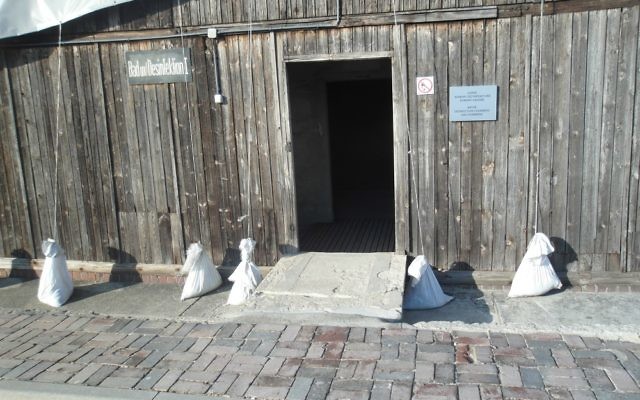

Thank you for helping to make Jewish News the leading source of news and opinion for the UK Jewish community. Today we're asking for your invaluable help to continue putting our community first in everything we do.
For as little as £5 a month you can help sustain the vital work we do in celebrating and standing up for Jewish life in Britain.
Jewish News holds our community together and keeps us connected. Like a synagogue, it’s where people turn to feel part of something bigger. It also proudly shows the rest of Britain the vibrancy and rich culture of modern Jewish life.
You can make a quick and easy one-off or monthly contribution of £5, £10, £20 or any other sum you’re comfortable with.
100% of your donation will help us continue celebrating our community, in all its dynamic diversity...
Engaging
Being a community platform means so much more than producing a newspaper and website. One of our proudest roles is media partnering with our invaluable charities to amplify the outstanding work they do to help us all.
Celebrating
There’s no shortage of oys in the world but Jewish News takes every opportunity to celebrate the joys too, through projects like Night of Heroes, 40 Under 40 and other compelling countdowns that make the community kvell with pride.
Pioneering
In the first collaboration between media outlets from different faiths, Jewish News worked with British Muslim TV and Church Times to produce a list of young activists leading the way on interfaith understanding.
Campaigning
Royal Mail issued a stamp honouring Holocaust hero Sir Nicholas Winton after a Jewish News campaign attracted more than 100,000 backers. Jewish Newsalso produces special editions of the paper highlighting pressing issues including mental health and Holocaust remembrance.
Easy access
In an age when news is readily accessible, Jewish News provides high-quality content free online and offline, removing any financial barriers to connecting people.
Voice of our community to wider society
The Jewish News team regularly appears on TV, radio and on the pages of the national press to comment on stories about the Jewish community. Easy access to the paper on the streets of London also means Jewish News provides an invaluable window into the community for the country at large.
We hope you agree all this is worth preserving.
-
By Laurent Vaughan - Senior Associate (Bishop & Sewell Solicitors)
-
By Laurent Vaughan - Senior Associate (Bishop & Sewell Solicitors)
-
By Laurent Vaughan - Senior Associate (Bishop & Sewell Solicitors)
-
By Laurent Vaughan - Senior Associate (Bishop & Sewell Solicitors)





















